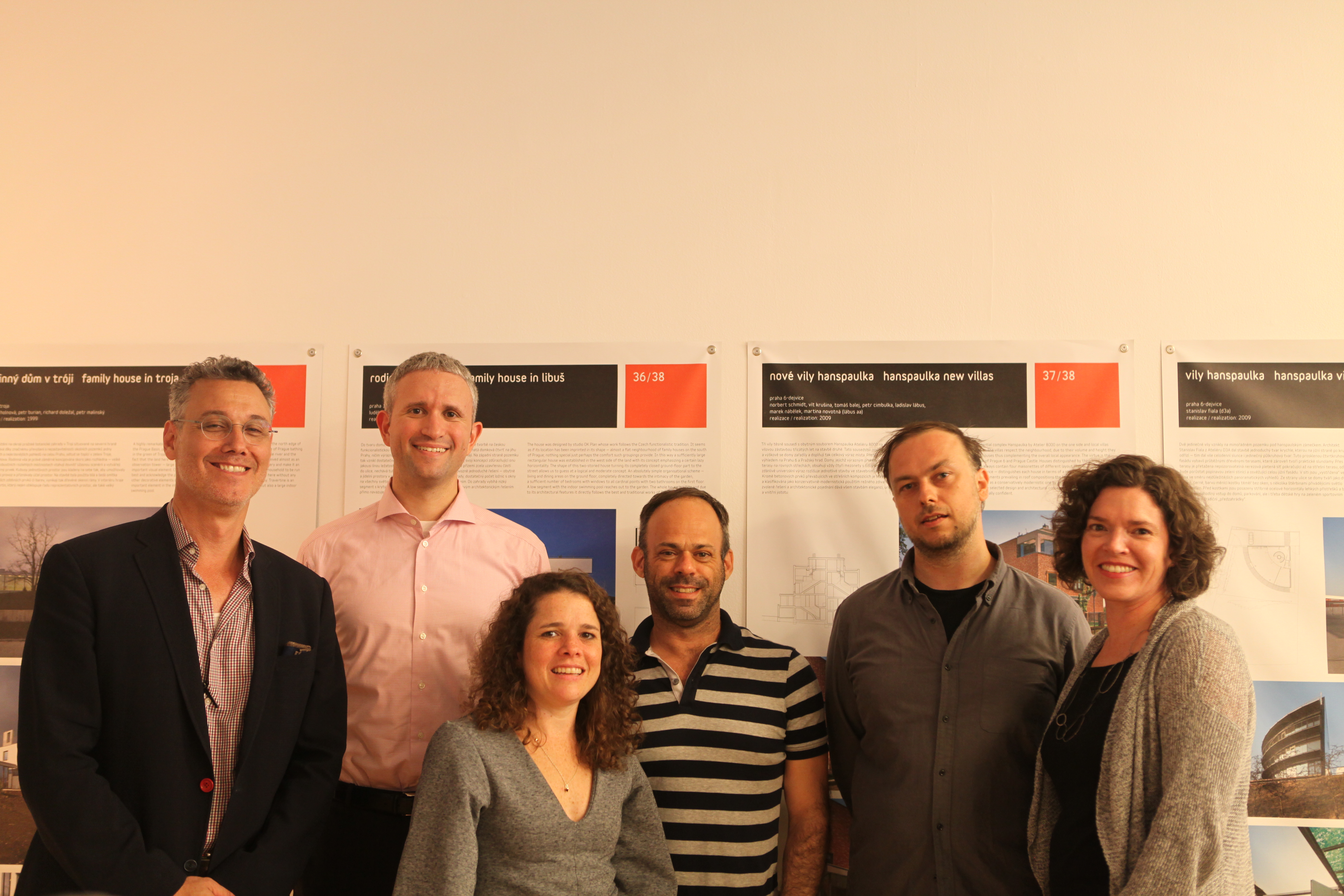by: Claire Rowell
On 06.15.15, the AIANY Professional Practice Committee concluded its Spring 2015 Transforming Architectural Practice (TAP) series with a “People’s Choice” session. Months of crowdsourcing ideas, analyzing feedback forms, and polling audiences revealed a key theme of interest: architects work with data every day, but how can data be used to design, measure, and learn from buildings and occupants to improve architectural products?
In alignment with TAP’s focus on learning from other industries, moderator Melissa Marsh, founder & CEO of PLASTARC, introduced a diverse panel of experts in data science and visualization, real estate strategy, and urban planning. Sarah Williams of MIT’s Civic Data Design Lab and Jeff Ferzoco of Linepointpath introduced the fundamentals of data: what it is, where it lives, who owns it, how it can be made understandable, and who’s doing what with it. An advocate for leveraging place-based data to shape urban space and planning, Ferzoco explained some of the many ways that building data can be communicated to passersby, from the classic neon binary of a motel vacancy sign, to demonstrating building water usage or carbon emissions. Even New York City’s government is up with the trends, publicly releasing data from Citi Bike, the 311 app, wi-fi, and trash cans. Ferzoco stresses that data has body language and that buildings can act as communicators, visualizing their associated data to the public as a macro-level narrative of the urban experience.
Consider that most New Yorkers have a GPS, fitness tracker, communicator, and camera in their pockets. Where historically anecdotal evidence and inaccessible machine data failed to spark engagement, the public is now key in creating data that starts debates, tells stories, and exposes urban patterns to affect policy change – and many actively participate in these conversations.
Williams engages the public to both leverage existing data and create new datasets, highlighting the influence of Foursquare’s “check-in” feature in enabling public participation. From NYC’s Made in Midtown campaign to mapping the migratory flow between cities and prisons, Williams prompted audience members to consider their role in designing buildings and creating spaces: “Leverage this available data to actively listen, understand, and effectively design for your audience.”
Darrick Borowski, creative director at ARExA, advocates for the unique skillsets of the design profession to present and apply data in an impactful and accessible manner. Borowski uses Grasshopper, geometry, and algorithms to explore relationships between architectural features and social drivers – from economics and food, to natural resources and pollution. His team explores measurable human patterns, like food consumption and workplace interaction, to evolve designs beyond typical spatial perspectives and scales. In collaboration with PLASTARC, Borowski maps and visualizes the interactions of analysts on a financial trading floor so that designers can discover a relationship between physical distance and frequency of communication, and then use it to design more effective floor plans in a city where every square foot is costly. Data-driven design presents endless opportunities for learning, measuring through post-occupancy, re-evaluating, improving, and delivering again.
While firms like ARExA are exploring the power of data to understand and predict spatial interaction, clients are also increasingly well-informed, entering the real estate or design market ready to leverage their own data to inform architectural solutions. Phil Kirschner of JLL emphasized the array of occupant-centric data tools that are becoming more widely used. During Kirschner’s development of Smart Working at Credit Suisse, his team deployed Tableau, a user-friendly data visualization tool, to better understand the organization’s workplace performance needs before engaging designers. Deploying the Smart Working mobility program, collecting workplace data, and assessing occupancy patterns painted a unique picture of workplace utilization, which directly informed the planning and design of new Credit Suisse locations. Assessing existing workplace data sets like VPN login, badge swipe, and room booking data also helps clients design for mobility, leveraging data-driven knowledge of workstation popularity, adjacency, and communication patterns.
These tech-savvy occupants represent a future state where real estate developers and management companies will deploy their own data to inform space planning before even hiring an architect or designer. In anticipation of this shift, it is the responsibility of the architectural community to seek out building data, to become comfortable with it through architectural education and firm methods, and to lead the data-driven design conversation. This session’s panelists concluded that data can always answer a question or predict a behavior, but first, a good data evangelist must identify the available data sources, use their peers to learn and share, and engage all stakeholders – from clients to occupants to building operators.
Claire Rowell is a Workplace Anthropologist at PLASTARC, a social research, workplace innovation, and real estate strategy firm serving tenants and owner-occupiers, and collaborating with architecture and design firms.
Event: Transforming Architectural Practice 2015: Data-Driven Design
Location: Center for Architecture, 06.15.2015
Speaker: Sarah Williams, Assistant Professor of Urban Planning and Director, Civic Data Design Lab, MIT; Jeff Ferzoco, Founder, LinePointPath; Darrick Borowski, Principal and Design Director, ARExA; Phil Kirschner, SVP of Consulting, JLL
Organizer: AIANY Professional Practice Committee








